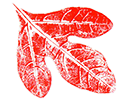When mowing or bush hogging a field, only do approximately 1/2 to 1/3 of the field each year. This creates a more complex and multiple-aged habitat which benefits both wildlife and pollinators.

For example, many of our butterflies will overwinter as a chrysalis attached to grass or flower stalks. Several of our native bees will lay eggs in the hollow stalks of last year’s dead plant stems. Praying mantises overwinter as egg cases attached to plant stems. If you cut the entire field every year, then there is no place for animals like these to overwinter. If you only cut part of the field each year on a rotating basis, then at least part of the field can still provide winter habitat for butterflies, stem-nesting native bees, praying mantises, and other insects.
Wildlife such as songbirds, rabbits, and small mammals can also benefit from a partial mowing pattern. The unmowed parts of the field will provide seed heads throughout the winter plus cover to hide from predators. The next spring, these areas will continue to provide thicker areas in which to hide or raise young, while the mowed areas provide a flush of new growth and easily digestible vegetation.
Only mowing or bush hogging part of a field each year might not look as neat or uniform as fields mowed in the traditional manner, but the critters will thank you for it.

This article was part of Shannon’s original Kentucky Pollinators and Backyard Wildlife blog which evolved into the blog for Backyard Ecology.

Backyard Ecology: Exploring Nature in Your Backyard
Nature isn’t just “out there.” It’s all around us, including right outside our doors. Hi, my name is Shannon Trimboli, and I am the host of Backyard Ecology. I live in southcentral Kentucky and am a wildlife biologist, educator, author, beekeeper, and owner of a nursery specializing in plants for pollinators and wildlife conservation. I invite you to join me as we ignite our curiosity and natural wonder, explore our yards and communities, and improve our local pollinator and wildlife habitat. Learn more or subscribe to my email list at www.backyardecology.net.

Leave a Reply to Backyard Ecology Cancel reply